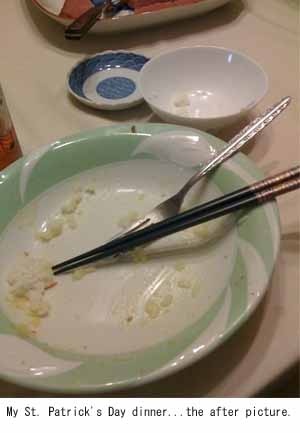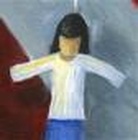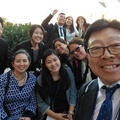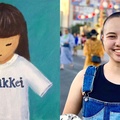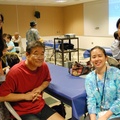Growing up, every year on the evening of March 16th, I would always make sure to wear something green to sleep. This was a self-preservation measure. If I didn’t—the moment I woke up—I would be mercilessly pinched by my mother, gleefully observing the St. Patrick’s Day tradition.
I remember one year, my father, who is a gardener, came home from work wearing his usual work clothes. My mother was ready to pounce on him, but then he smiled broadly and pointed to the green leaf pinned to his shirt. My mother was disappointed, but we all got a good laugh at his ingenuity.
Even now that I am no longer living with my parents, I find myself making sure that I wear green on the chance that I will see her sometime that day. I catch myself feeling surprised when I see that not everyone wears green on the day. Doesn’t every American celebrate St. Patrick’s Day? I realize then that it’s not exactly the norm.
So why does my family celebrate St. Patrick’s Day? We’re Japanese. There is not a drop of Irish blood to be found anywhere in our genes…and yet every March 17th, we suddenly become Japanese-Irish Americans for the day—wearing green, eating corned beef and cabbage…with rice.
When we were children, I remember staying over at my cousin’s house the night before Easter Sunday. My auntie would boil dozens of eggs and her two kids, my sister, and I would sit at the dining room table and decorate them with various colored food dyes. The next morning, everyone would come over and the adults would hide the eggs in the backyard. Then, us kids would be set loose to find them hidden behind flowerpots, nestled in trees, and in little nooks and crannies throughout the yard. Once they had all been found, we would look over our catch. There were way too many for us to eat ourselves, so the eggs would then go to the adults for consumption. As we grew older, we became less interested in the hunting part of the egg hunt. After we had found the hidden eggs, us cousins would take turns hiding them again. Eventually, we stopped because no one wanted to find them.
For Fourth of July, my father’s family used to go to the beach. I can’t recall the name of it now, but I remember parking at the top of what seemed like a really tall cliff (from the perspective of a small child) and walking down a steep, narrow sandy path down to the shore. The fathers would lay their goza mats and blankets on the sand and the mothers would pull out their contributions to the potluck lunch. Spread out over a wide area would be tins and assorted containers filled with Japanese goodies like chicken teriyaki, omusubi, and tsukemono, together with American dishes like hamburgers and hot dogs.
Towards the end of the year comes Thanksgiving. It’s actually my most favorite food day of the year, because in addition to traditional fare like turkey, stuffing, and mashed potatoes, my plate includes rice…all absolutely drowned in gravy. There are also sometimes things like hijiki or other Japanese dishes that the early Pilgrims would have never thought to include with their meal.
At Christmas, we celebrate with festive trees, lights, and decorations. Gifts are exchanged. My sister and I sing Christmas carols despite the fact that a lot of them are based on a religion we don’t practice. I guess what my family really celebrates is the commercialized version of being an American as seen through TV, the media, and in stores. When we sing Christmas songs, wear green on St. Patrick’s Day, and decorate eggs for Easter, it’s us embracing being an American.
I think a lot of it has to do with the fact that my parents, and my mother in particular, grew up in Japan. She arrived in the U.S. during the ‘60s in her early twenties. Our families didn’t have a lot of money, so my mom would make a lot of her own clothes. She would buy cloth and patterns from the local store. When I look at photos of her and my relatives from when I was young, they’re happily wearing clothes in the style of the American ‘70s. Now, my sister and I do the reverse and wear t-shirts with kokeshi and gaman printed on them.
When I reflect on it, I guess it really is an issue of identity. My mother and her generation, because they grew up in Japan, were trying to be more American. My sister and I, and many in our generation, are trying to connect back to being more Japanese. In the end, we can’t be totally one or the other. It’s just trying to figure out where we are in between.
This past Tuesday, I wore my green Museum t-shirt to my parents’ house for a St. Patrick’s Day dinner of corned beef, cabbage, carrots, onions, and potatoes…and rice.
© 2009 Vicky Murakami-Tsuda



